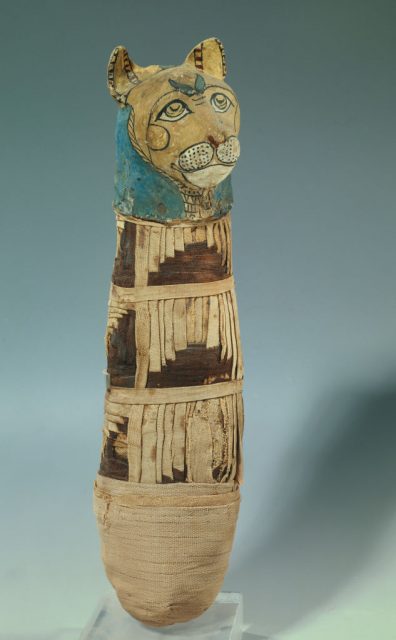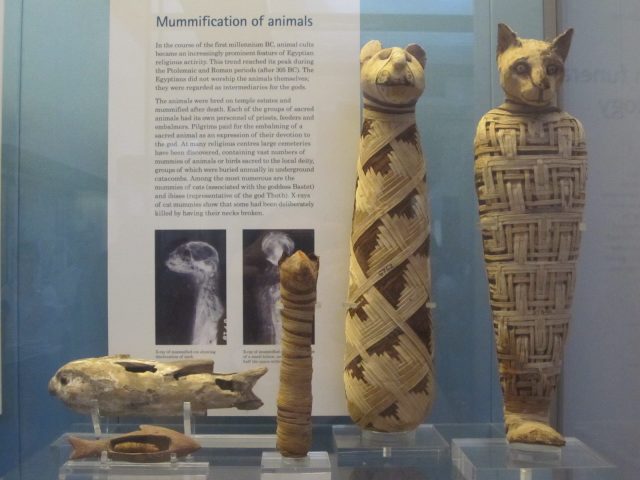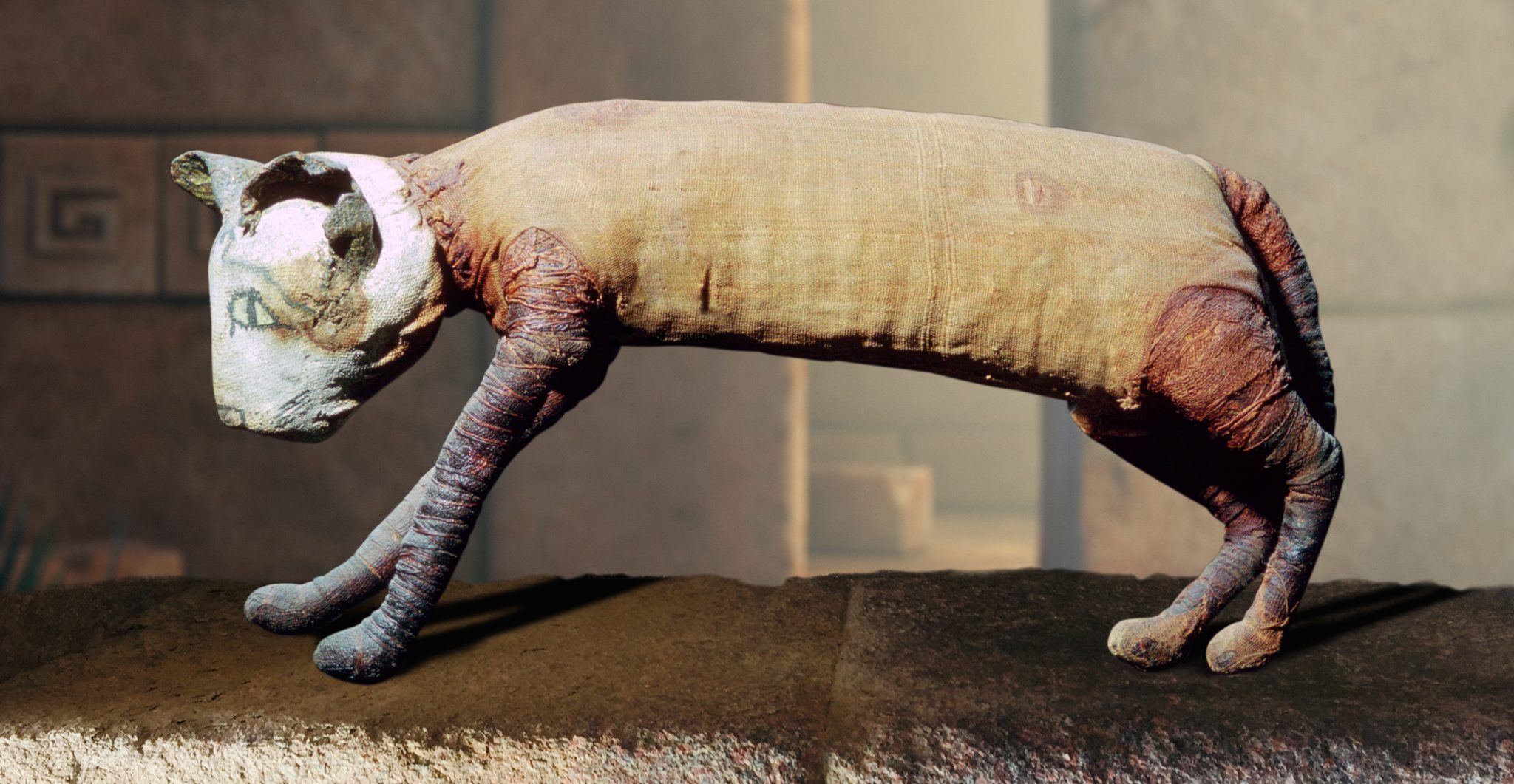Modern technology has revealed something very strange in one particular cat mummy. Cats were revered in Ancient Egypt. The animals were treated almost as gods, and those owned by the wealthy were adorned in jewels and other finery.
As Egypt was primarily an agricultural society one can see the value of cats to protect precious grain stores from snakes, rats, and other pests. Severe penalties were doled out for injuring or harming a cat, even if by accident. Cats were frequently mummified and buried together or along with their owners to join them in the next life.
One particular mummy, about two thousand five hundred years old and held in the Museum of Fine Arts in Rennes has recently been found to hold a fascinating mystery. It was X-rayed and 3D scanned, revealing it was not just one cat but the remains of many cats, and a ball of fabric was where the skull should have been.
Several incomplete tailbones and five back legs were observed and, according to The Sun, Theophane Nicolas of the French National Institute for Preventive Archaeological Research stated, “There are millions of animal mummies, but few have been imagined. Some are empty, others contain only one bone, sometimes the cat is complete… some researchers believe that we are dealing with an ancient scam organized by unscrupulous priests, we believe on the contrary that there are innumerable ways to make animal mummies.”
Inside Ancient Egyptian Cat Mummy, Archaeologists Find the Remains of 3 Cats
Scans of an ancient cat mummy revealed that the 2,500-year-old feline supposedly resting within the wrappings wasn’t a single animal. Instead, the mummy held the partial remains of three cats pic.twitter.com/RhBKeGq05D
— Dr Estelle Paranque (@DrEstellePrnq) November 11, 2019
The Carnegie Museum of Natural History in Pittsburgh, Pennsylvania has a cat mummy on display next to the X-rayed image showing a full cat skeleton.

Several mummified cats and almost one hundred cat statues made of wood were discovered in 2018 near a pyramid built for Pharaoh Userkaf (2291 BC-2289 BC) at Saqqara in Egypt near Cairo. The items are still being carbon dated, but scientists at the Egyptian Ministry of Antiquities believe that from 717 BC to about 332 BC the tomb was used for cat burials. Also found was a bronze statue of Bastet in the form of a cat; she was the daughter of Ra and the Egyptian goddess of the home, women, cats, fertility, and childbirth. She also protected the home from evil spirits and disease.

A cult of Bastet emerged at Bubastis in Lower Egypt, and the city became opulent as Egyptians came from all over to participate in the annual festival of Bastet. Part of the festival included bringing mummified cats as offerings, and when the temple was excavated in 1889, over three hundred thousand cat mummies were discovered.
Bastet remained an important deity until the rise of Christianity according to Ancient History Encyclopedia. Herodotus, an ancient Greek historian, wrote that when a family cat died of natural causes the inhabitants of the house shaved off their eyebrows and were considered to be in mourning until the eyebrows grew back.
When the family dog died, however, members of the family shaved all the hair off their bodies including the head. According to Ancient Egypt Online, Herodotus visited Bubastis in 450 BC and wrote that Bastet’s temple was not as large or costly as others but was the most beautiful. Bubastis was overrun by the Persians in 350 BC effectively relegating the cat’s status in that town from divine to just a house pet.
According to How Stuff Works, DNA suggests cats were first domesticated in Egypt and surrounding areas about ten thousand years ago when they began to catch vermin near the grain storage. Realizing how this was a benefit to them, ancient Egyptians started feeding them and allowing them into their lives.
Egyptologist Melinda Hartwig, curator of ancient Egyptian, Nubian and Near Eastern art at Emory University’s Michael C. Carlos Museum in Atlanta, Georgia wants to make it clear that Egyptians did not worship cats but believed that cats possessed a divine energy. Mummified cats were often sold, especially in Bubastis.
Related Article: How Cats Came to be Associated with Witchcraft
Pilgrims were sold cat mummies to enable them to make an offering to Bastet, and it is entirely possible that many fakes such as the one in Rennes were sold to unsuspecting worshipers.
